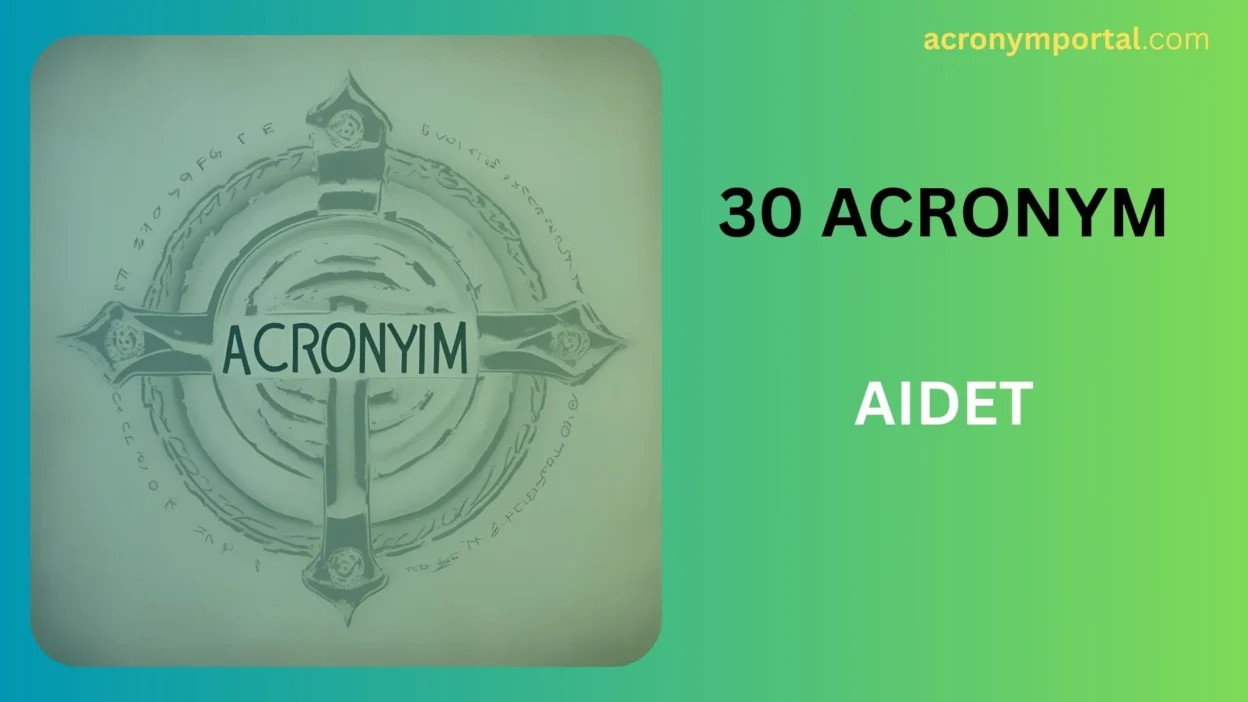When it comes to communication in healthcare, few frameworks are as widely adopted as AIDET. Originally developed to improve patient-provider interactions, the AIDET acronym stands for:
Acknowledge
Introduce
Duration
Explanation
Thank You
This structured communication tool is used primarily in hospitals and clinical settings to promote clarity, empathy, and trust—key traits in high-stress environments where patients and their families may feel overwhelmed.
But communication isn’t one-size-fits-all. There are many alternative acronyms and models that serve similar goals—fostering trust, improving efficiency, and delivering respectful, patient-centered care. These alternatives vary in emphasis: some focus more on safety, others on empathy, efficiency, or engagement.
Below is a curated list of 30 AIDET alternatives or acronym-based models, each with a short description, example use, and guidance on when it’s the best fit. Whether you’re a healthcare worker, administrator, or medical communicator, this list will help you navigate the subtle differences and choose the right tool for the moment.
🩺 30 Alternatives to the AIDET Acronym
1. SBAR
Meaning: Situation, Background, Assessment, Recommendation
Example: Use SBAR during patient handoffs to ensure clarity.
When to use: Critical communication between healthcare professionals.
2. ISBAR
Meaning: Identify, Situation, Background, Assessment, Recommendation
Example: ISBAR adds identification for better accountability.
When to use: High-risk clinical environments.
3. HEART
Meaning: Hear, Empathize, Apologize, Respond, Thank
Example: HEART is ideal for managing patient complaints.
When to use: De-escalating emotionally charged situations.
4. PEARLS
Meaning: Partnership, Empathy, Apology, Respect, Legitimization, Support
Example: Using PEARLS builds emotional rapport with patients.
When to use: Delivering bad news or building trust.
5. CURE
Meaning: Connect, Understand, Respond, Empower
Example: CURE keeps the focus on empowering patients.
When to use: Patient education and health coaching.
6. LEARN
Meaning: Listen, Explain, Acknowledge, Recommend, Negotiate
Example: LEARN helps bridge cultural gaps in communication.
When to use: Cross-cultural or difficult conversations.
7. RESPECT
Meaning: Rapport, Empathy, Support, Partnership, Explanations, Cultural competence, Trust
Example: The RESPECT model helps in diverse clinical settings.
When to use: Health equity or cultural sensitivity training.
8. BEER
Meaning: Behavior, Effect, Expectation, Result
Example: Use BEER for constructive staff feedback.
When to use: Internal team management and reviews.
9. SOLER
Meaning: Sit squarely, Open posture, Lean forward, Eye contact, Relax
Example: SOLER emphasizes nonverbal cues during patient interviews.
When to use: Counseling or bedside care.
10. NURSE
Meaning: Name, Understand, Respect, Support, Explore
Example: NURSE is perfect for showing empathy and emotional validation.
When to use: Difficult emotional disclosures.
11. DESC
Meaning: Describe, Express, Specify, Consequences
Example: DESC is great for resolving team conflicts.
When to use: Assertiveness training and inter-staff communication.
12. ICARE
Meaning: Introduce, Connect, Ask, Respond, Exit
Example: ICARE focuses on strong starts and respectful finishes.
When to use: Frontline staff interactions.
13. SAFE
Meaning: Spot, Assess, Fix, Evaluate
Example: Use SAFE to address safety hazards quickly.
When to use: Environmental safety checks.
14. CIVILITY
Meaning: Courtesy, Inclusion, Voice, Integrity, Listening, Transparency, Yes
Example: CIVILITY supports respectful workplace culture.
When to use: Culture training or HR.
15. CLEAR
Meaning: Connect, Listen, Explain, Ask, Reassure
Example: CLEAR improves communication in patient education.
When to use: Teaching moments or post-treatment reviews.
16. GREET
Meaning: Greet, Respect, Explain, Engage, Thank
Example: GREET is good for front-desk and support staff.
When to use: Initial patient encounters.
17. PREP
Meaning: Prepare, Relate, Explain, Provide
Example: PREP helps ready patients for surgery.
When to use: Preoperative communication.
18. SENSE
Meaning: Support, Empathize, Normalize, Summarize, Educate
Example: SENSE supports emotional discussions with patients.
When to use: Behavioral health or serious diagnoses.
19. VALUE
Meaning: Value, Acknowledge, Listen, Understand, Explore
Example: VALUE fosters end-of-life care conversations.
When to use: Palliative and hospice settings.
20. CARE
Meaning: Connect, Acknowledge, Respond, Educate
Example: CARE keeps focus on active listening.
When to use: General-purpose patient communication.
21. SMART
Meaning: Specific, Measurable, Achievable, Relevant, Time-bound
Example: SMART goals help in patient recovery plans.
When to use: Goal setting for patients or teams.
22. TELL
Meaning: Talk, Explain, Listen, Learn
Example: TELL ensures two-way communication.
When to use: During new patient onboarding.
23. COPE
Meaning: Calm, Observe, Plan, Execute
Example: COPE helps manage stressful patient events.
When to use: Emergency care or crisis handling.
24. CLARA
Meaning: Calm, Listen, Affirm, Respond, Add info
Example: CLARA helps you respond to anger with empathy.
When to use: Conflict de-escalation.
25. ACT
Meaning: Acknowledge, Communicate, Transition
Example: ACT smooths out shift handovers.
When to use: Short-form communication between staff.
26. THINK
Meaning: True, Helpful, Inspiring, Necessary, Kind
Example: THINK supports respectful dialogue.
When to use: Conflict prevention or online communication policies.
27. LISTEN
Meaning: Look interested, Involve yourself, Stay focused, Test understanding, Evaluate, Neutralize
Example: LISTEN boosts emotional intelligence in caregivers.
When to use: Active listening training.
28. RESPOND
Meaning: Recognize, Empathize, Speak clearly, Provide options, Offer support, Name next steps, Deliver follow-up
Example: RESPOND is great for service recovery situations.
When to use: Handling service failures or complaints.
29. GIFT
Meaning: Greet, Inform, Follow through, Thank
Example: GIFT creates a positive patient experience at every touchpoint.
When to use: Hospitality-based patient service.
30. WARMTH
Meaning: Welcome, Ask, Reflect, Match, Thank, Help
Example: WARMTH fosters relational trust in pediatric care.
When to use: Emotional or family-focused settings.
🎯 How to Choose the Right Communication Framework
- Patient-facing vs. Staff-facing: Use AIDET, HEART, or ICARE for patients, and SBAR, DESC, or BEER for inter-staff clarity.
- Emotional vs. Informational: If emotions run high, choose HEART, PEARLS, or SENSE. For clinical precision, go with SBAR, ISBAR, or PREP.
- Cultural or Diversity Contexts: Use RESPECT, LEARN, or VALUE to address cross-cultural or sensitive care.
Keep in mind: many of these acronyms overlap in values—they’re simply tuned to different tones, roles, or stages in the care journey.
🧭 Final Thoughts
The AIDET acronym has revolutionized the way we approach patient communication, but it’s just one of many powerful tools available. By understanding when and why to use alternatives like HEART, SBAR, or PEARLS, healthcare providers can tailor interactions to meet emotional, cultural, and clinical needs more effectively.
Each acronym is like a compass for better conversations—pointing us toward empathy, structure, and trust. When chosen wisely, these frameworks help us speak not just to patients and teams, but with them—bringing healing through humanity.




